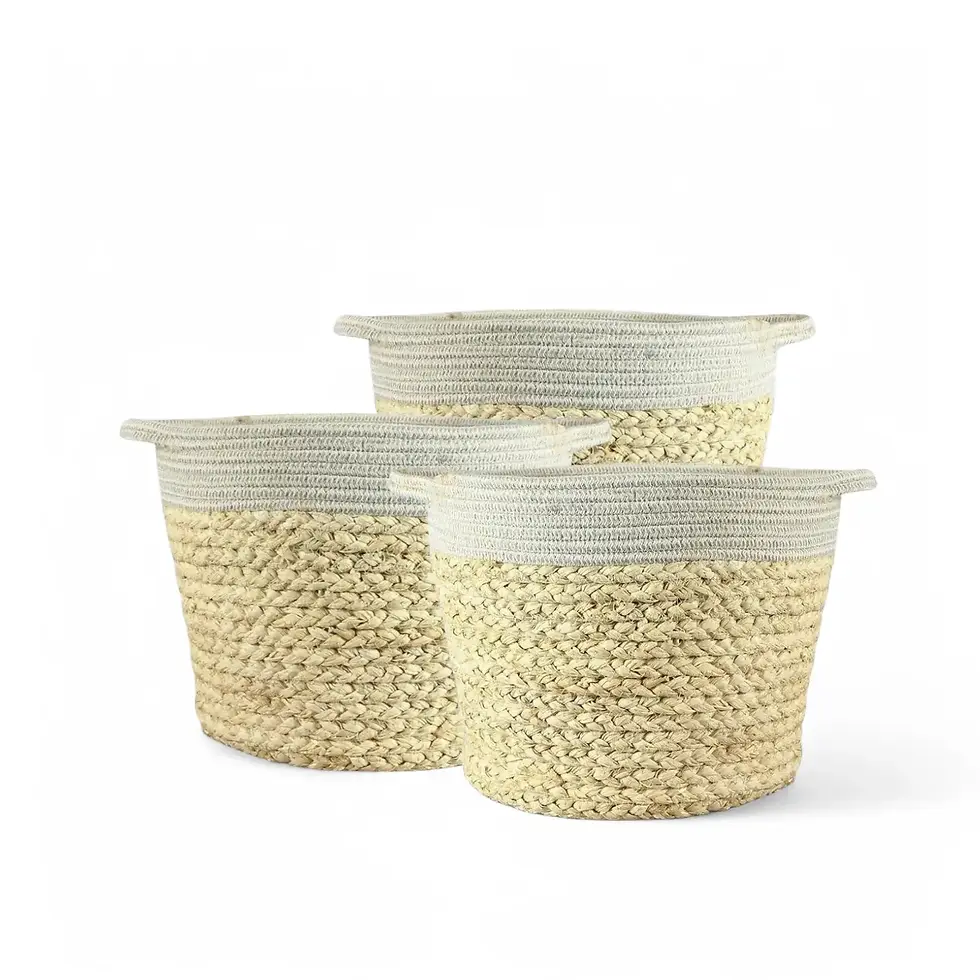Saribus rotundifolius - Care Guide and Essential Information
Saribus rotundifolius, also known as the footstool palm, is a striking tropical palm distinguished by its large, fan-shaped leaves and graceful, slender trunk. Native to Southeast Asia, this species thrives in warm, humid environments, making it an excellent choice for indoor cultivation when provided with the right conditions.
Unique Characteristics of Saribus rotundifolius
- Foliage: Large, nearly circular, deep green leaves with a glossy surface, divided into stiff lobes with notched edges.
- Growth Habit: Upright and slow to moderate in growth rate, reaching up to 3-4 meters indoors.
- Trunk: Smooth with shallow leaf scars that add to its elegant, architectural appearance.
- Toxicity: Non-toxic to pets and humans.
Saribus rotundifolius - Natural Habitat and Growth
Native to tropical forests in the Philippines, Sulawesi, and the Maluku Islands, Saribus rotundifolius can reach heights of 15-25 meters in the wild. It flourishes in warm, humid conditions with average annual temperatures between 22-30°C and high rainfall.
Caring for Saribus rotundifolius
→ Placement
- Prefers a bright location with indirect sunlight but can tolerate some shade.
- Avoid direct afternoon sun, which can scorch the leaves.
- Best positioned in a warm, humid area away from drafts or sudden temperature changes.
→ Light
- Thrives in bright, indirect light but can adapt to partial shade.
- In lower light conditions, expect slower growth and slightly smaller leaves.
→ Watering
- Water when the top third of the soil dries out, ensuring even moisture.
- Avoid overwatering, as standing water can lead to root rot.
- Reduce watering slightly in winter but do not let the soil dry out completely.
→ Humidity
- Prefers high humidity (above 50%)—dry air can lead to brown leaf tips.
- Use a humidifier or place the plant near other humidity-loving plants.
→ Temperature
- Ideal range: 12°C to 30°C.
- Keep away from cold drafts, air conditioning vents, and heaters.
→ Soil
- Use a well-draining, organic-rich potting mix.
- A mixture containing peat, perlite, and sand ensures proper aeration.
→ Repotting and Pot Choice
- Repot every two years or when roots become crowded.
- Choose a deep, well-draining pot that allows room for root expansion.
→ Fertilizing
- Apply a balanced liquid fertilizer every 4 weeks during active growth.
- Reduce feeding in winter when growth slows down.
→ Propagation
- Primarily propagated via seeds, but germination can be slow and requires high humidity.
- Not commonly propagated through division.
→ Semi-Hydroponics
- Can adapt to semi-hydroponic systems with proper monitoring.
- Use LECA (lightweight expanded clay aggregate) and a hydroponic nutrient solution.
→ Pruning
- Remove dead or damaged leaves at the base to encourage healthy growth.
- Avoid excessive trimming, as this palm naturally sheds older leaves over time.
Saribus rotundifolius - Common Issues and Solutions
→ Pests
- Spider mites, mealybugs, and scale insects may infest the leaves.
- Treat with insecticidal soap , neem oil, or use beneficial insects.
- Regularly wipe leaves to prevent pest buildup.
→ Root Rot
- Overwatering can lead to fungal infections and root rot.
- Use a well-draining mix and avoid letting the plant sit in excess water.
→ Leaf Issues
- Brown tips: Caused by low humidity or excessive fertilizer salts. Increase humidity and flush soil periodically.
- Yellowing leaves: Indicates overwatering or nutrient deficiency. Adjust watering and ensure balanced feeding.
→ Fungal Issues
- Fungal leaf spot diseases can develop in overly humid conditions with poor airflow.
- Improve air circulation and avoid overhead watering.
Additional Considerations for Saribus rotundifolius
- Support: While naturally upright, larger specimens may benefit from a stabilizing stake.
- Cleaning: Wipe leaves regularly to remove dust and maintain their glossy appearance.
- Acclimatization: New plants may require adjustment time when transitioning between environments.
Etymology
The genus Saribus derives from an old name for palms used in Southeast Asia. The species name rotundifolius comes from Latin, meaning “round-leaved,” referring to its distinct leaf shape. Originally described as Corypha rotundifolia by Jean-Baptiste Lamarck before being reclassified by Carl Ludwig Blume in 1838.
Frequently Asked Questions about Saribus rotundifolius
→ 1. Can Saribus rotundifolius be grown outdoors in colder climates?
- No, it requires consistently warm temperatures. It is best suited for indoor cultivation in temperate regions.
→ 2. How fast does Saribus rotundifolius grow?
- It has a moderate growth rate, typically producing new leaves every few months under optimal conditions.
→ 3. What should I do if my palm’s leaves are turning brown?
- Check humidity levels and watering habits. Brown tips often indicate dry air or excess fertilizer salts.
Order Today!
Add the stunning Saribus rotundifolius to your plant collection and enjoy its tropical beauty. Buy now!
Saribus rotundifolius
Saribus rotundifolius comes in following sizes:
S – is approximately 35 cm tall and comes in a ⌀ 12 cm pot.
L – is approximately 100 cm tall and comes in a ⌀ 21 cm pot.

























































